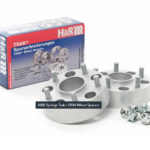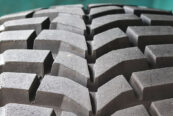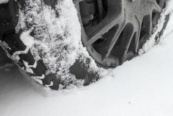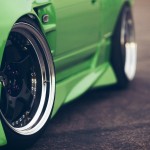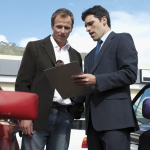When it comes to auto racing, the importance of high-quality tires cannot be overstated. Racing tires play a crucial role in determining a vehicle's performance, speed, and safety on the track. With so many options available in the market, it can be overwhelming to choose the right set of racing tires for your vehicle. In this article, we'll explore everything you need to know about racing tires - from their types, composition, and features to their maintenance and safety tips.
Types of Racing Tires
There are several types of racing tires available, each designed for specific types of racing and vehicles. Some of the most common types of racing tires are:
Slick Tires
Slick tires, also known as "racing slicks," are designed for dry track conditions. They are smooth and do not have any treads or patterns on the surface, allowing for maximum contact with the road. Slick tires provide excellent grip and traction, allowing for higher speeds and better cornering.
Wet Tires
Wet tires, also known as "rain tires," are designed for wet track conditions. They have deeper treads and patterns on the surface, allowing for better water evacuation and grip. Wet tires are softer than slick tires, providing better grip on wet surfaces.
Intermediate Tires
Intermediate tires are designed for track conditions that are neither completely dry nor completely wet. They have shallow treads and patterns on the surface, providing a balance between grip and water evacuation.
Drag Tires
Drag tires are designed for drag racing. They have a soft compound and a wide surface area, providing maximum traction and grip for quick acceleration.
Composition of Racing Tires
Racing tires are made up of several layers of rubber, fabric, and steel belts. The innermost layer is the carcass, which provides the tire's structure and shape. The next layer is the "bead," which holds the tire in place on the wheel. The outermost layer is the "tread," which comes into contact with the road surface.
The compound of the tire, which is the mixture of rubber and additives used to make the tire, is another crucial component of racing tires. The compound determines the tire's grip, durability, and performance. Soft compounds provide better grip but wear out quickly, while hard compounds provide better durability but less grip.
Features of Racing Tires
Racing tires come with several features that enhance their performance and safety. Some of the most important features are:
Shoulder Blocks
Shoulder blocks are the outermost part of the tire's tread. They provide additional grip and support during cornering and turning.
Grooves and Patterns
Grooves and patterns on the tire's tread provide water evacuation and prevent hydroplaning on wet surfaces.
Contact Patch
The contact patch is the area of the tire that comes into contact with the road surface. Racing tires have a larger contact patch, providing better grip and traction.
Sidewall
The sidewall of the tire provides additional support and stability, preventing the tire from flexing and deforming during high-speed turns.
Temperature Range
Racing tires are designed to operate within a specific temperature range. Operating outside of this range can result in reduced grip, poor performance, and even tire failure.
Maintenance and Safety Tips for Racing Tires
Proper maintenance and care of racing tires are crucial to ensure their performance and safety on the track. Here are some tips to keep in mind:
Inspect Tires Regularly
Inspect your tires regularly for signs of wear, damage, or punctures. Replace any damaged or worn-out tires immediately.
Maintain Proper Tire Pressure
Maintain the recommended tire pressure for your vehicle to ensure proper grip and performance. Underinflated or overinflated tires can result in poor performance, reduced grip, and even tire failure.
Monitor Tire Temperature
Monitor the tire temperature during use to ensure that it remains within the recommended range. Overheated tires can cause a blowout, resulting in a loss of control and potentially hazardous situations.
Store Tires Properly
Store your tires in a cool, dry place away from direct sunlight and moisture. This will prevent the tires from degrading and cracking.
Use the Right Type of Tire for Your Vehicle
Ensure that you are using the right type of tire for your vehicle and the track conditions. Using the wrong type of tire can result in poor performance, reduced grip, and even accidents.
In conclusion, racing tires play a crucial role in determining a vehicle's performance, speed, and safety on the track. Choosing the right type of tire, understanding its composition and features, and proper maintenance and care are essential to ensure the best performance and safety possible. With the information provided in this article, you can make an informed decision on the best racing tires for your vehicle and race with confidence.



